In this year-end episode of the Napkin Numbers podcast, Scott Lundt and Rahsaan Freeman recap the key trends of 2024, from innovative deal structuring in commercial finance to the growing role of real estate syndication and electrification initiatives.
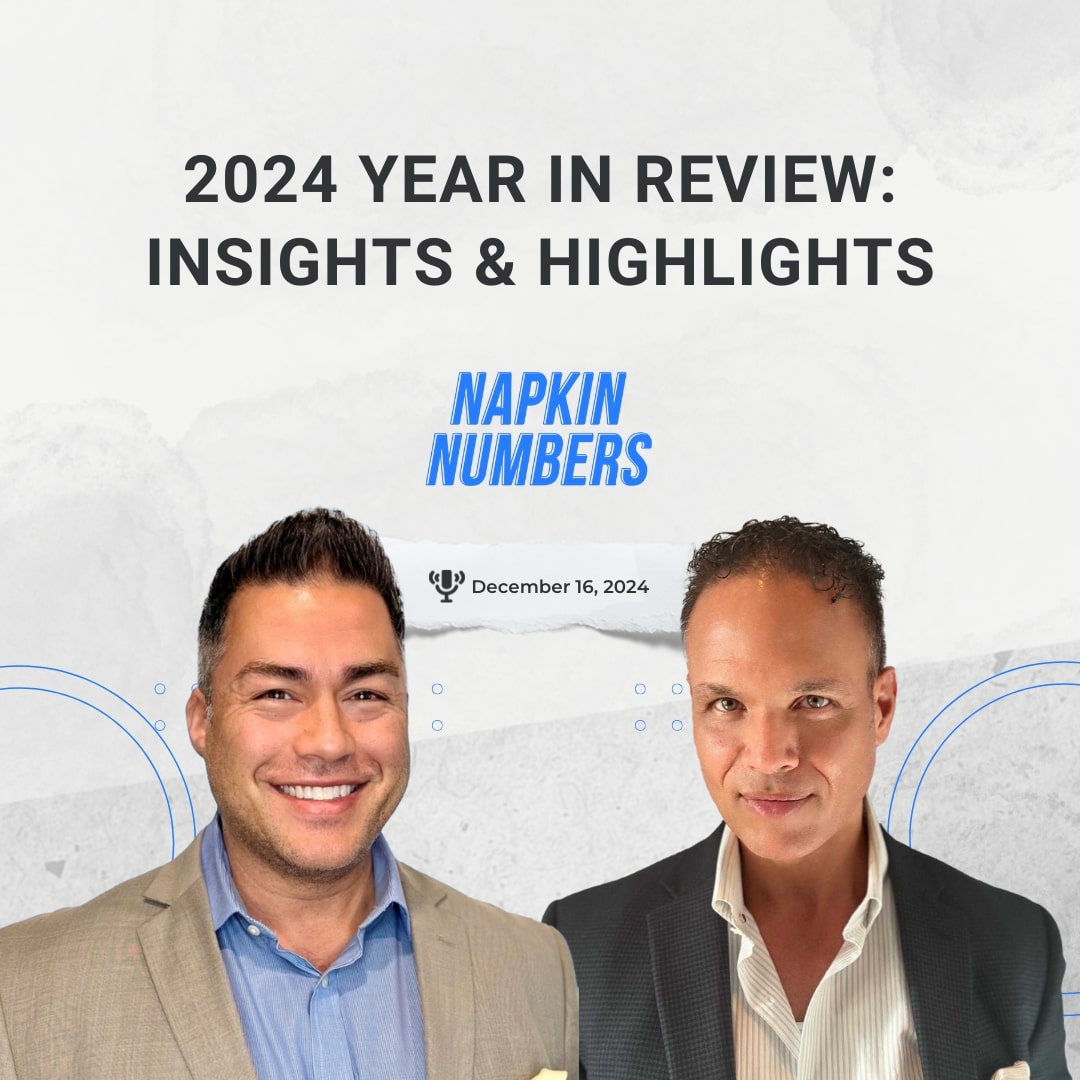
2024 Year in Review: Insights & Highlights
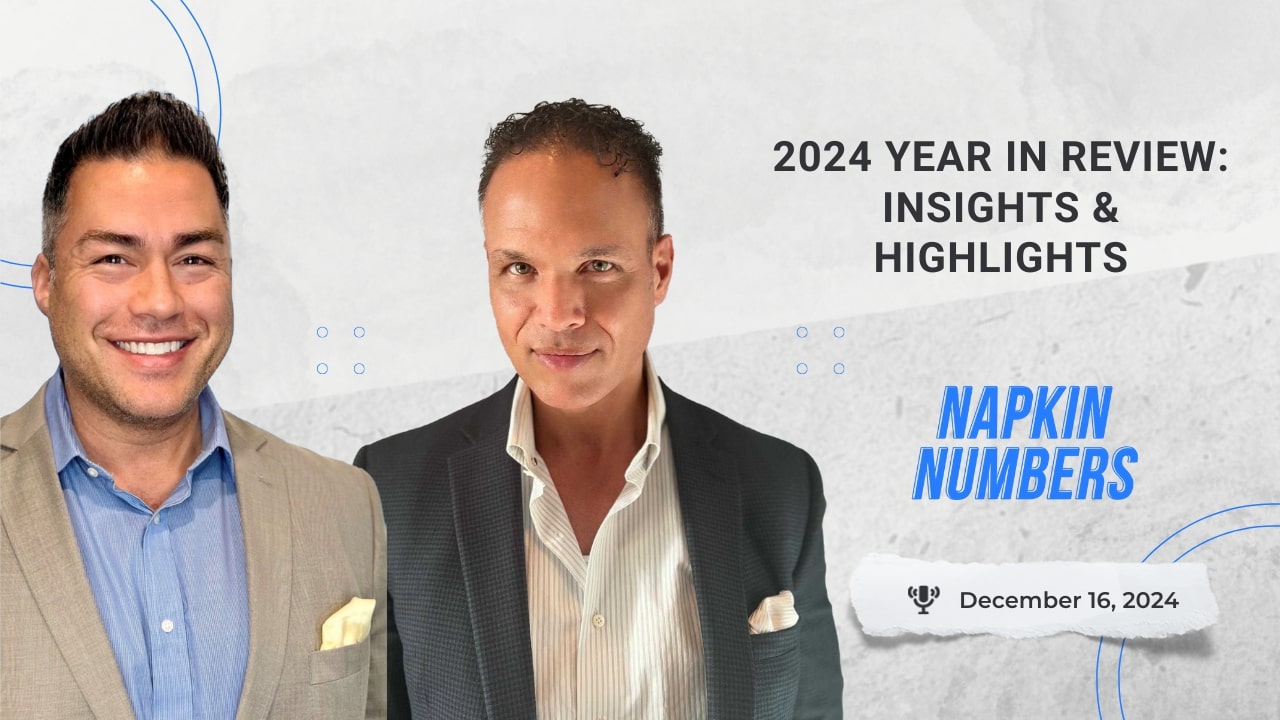
They share strategies for closing financing gaps, highlight opportunities in infrastructure and skilled labor industries, and explain how their adaptive approach can help you achieve your goals in the year ahead.
Napkin Numbers Talking Points
[0:23] Year in Review – M&A Side
- Scott discusses Freeman Lundt, the buyer’s market, value gap tools, and roll-up strategies. He also offers predictions of hot industries for buyers in 2025.
[1:48] Commercial Capital and Critical Thinking
- Rahsaan emphasizes the importance of critical thinking in lending and finance, highlighting the need to think outside the box and find creative solutions to get deals done.
[3:50] Introduction to Syndication
- Scott introduces their new division focused on real estate syndication, expressing excitement about providing opportunities for clients to succeed through investments and tax-saving strategies in 2025.
[4:46] Portfolio Companies and Electrification
- The team delves into their electrification movement, emphasizing the need for creative financing solutions and education to drive energy efficiency and sustainability in infrastructure projects in 2025.
[6:49] Closing Remarks and Gratitude
- Scott Lundt expresses gratitude to their audience, clients, and supporters, highlighting the success of 2024 and expressing excitement for the growth and opportunities in 2025.
Financing and growth opportunities are abundant, but navigating them requires creativity and expertise. Freeman Lundt specializes in helping entrepreneurs and businesses close financing gaps, leverage syndication strategies, and capitalize on electrification trends.
With 2025 on the horizon, we offer actionable insights into structuring deals, securing grants, and identifying the hottest industries for growth. Don’t wait—reach out to Freeman Lundt today to explore the opportunities that can elevate your business in the year ahead.
Freeman Lundt is here to help you plan your business’s growth, and exit from your business on your terms. The #1 question of CEOs looking to grow or sell their business is always, what is my business worth? Don’t worry, we have a free, confidential, industry-leading tool for that! Please use our complimentary business evaluation calculator to determine your business’s worth.
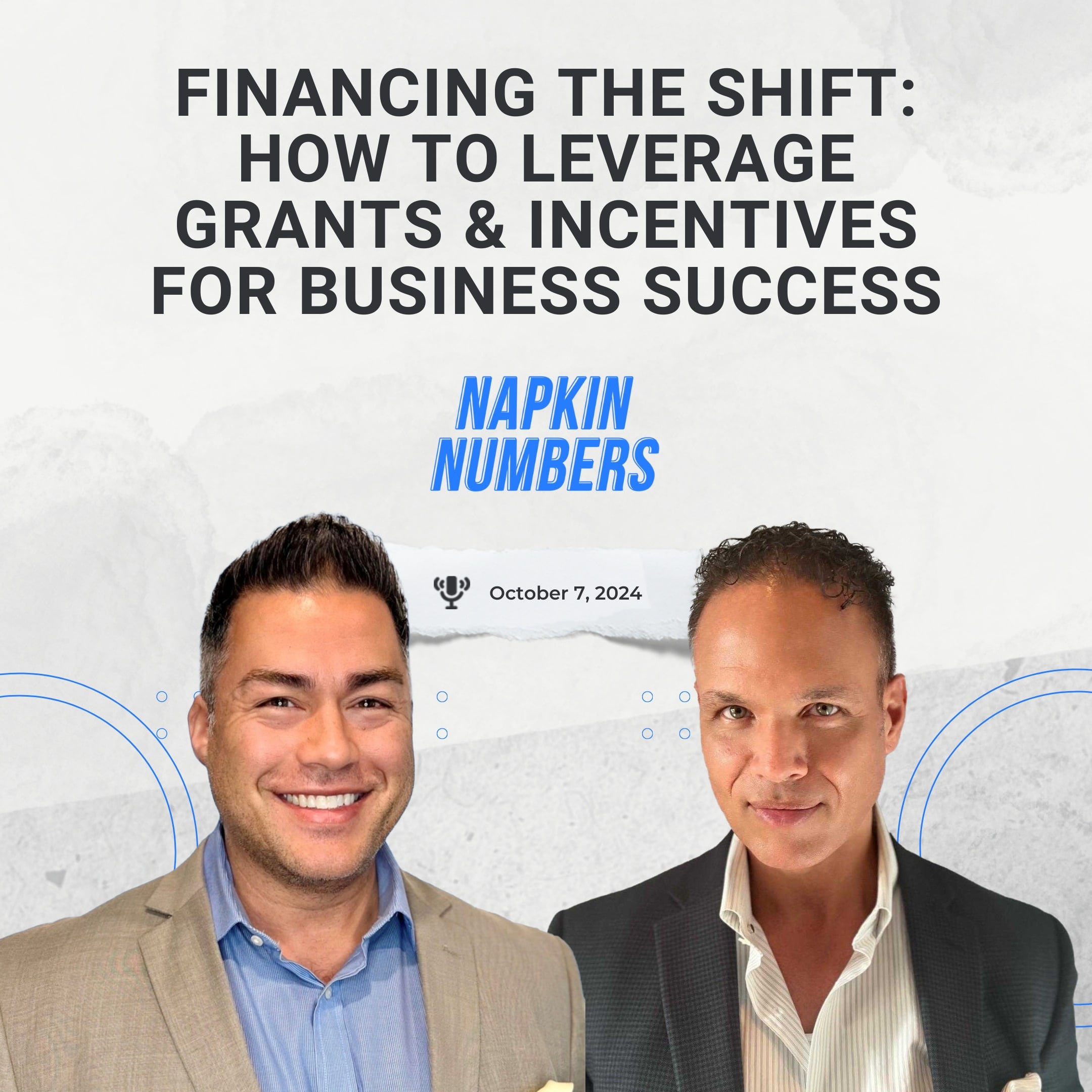
Financing the Shift: How to Leverage Grants & Incentives for Business Success
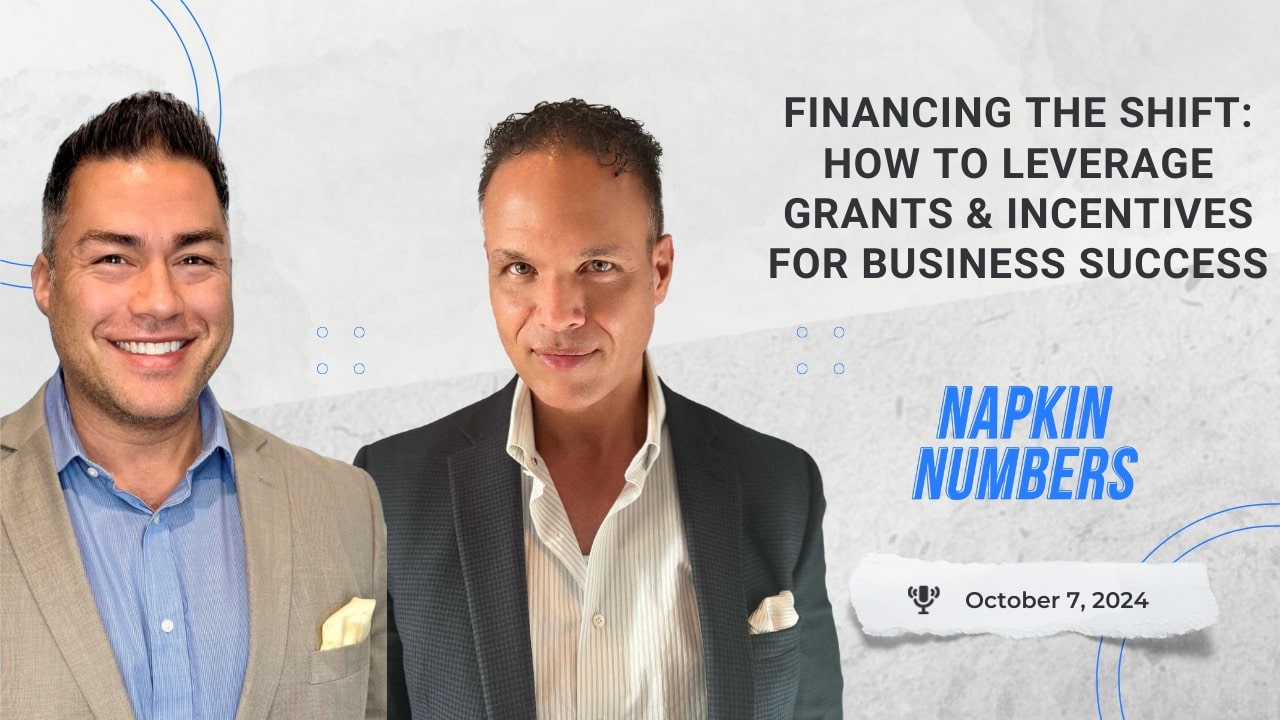
If you’re an entrepreneur navigating the world of government contracts, it’s likely you’ve struggled to secure funds to complete your project. Have you been told to simply figure it out alone, leaving you feeling overwhelmed and stuck in a financial puzzle? The pain of hitting financing gaps and missing out on valuable opportunities may be all too real.
But what if there’s a better way to close those gaps and achieve successful financing for your projects? In this episode of the Napkin Numbers podcast, Scott Lundt and Rahsaan Freeman reveal the secrets they’ve uncovered in financing and implementing projects, including securing grants for EV charging stations and closing financing gaps in energy efficiency.
Scott and Rahsaan draw parallels between their commercial capital experience and manufacturing, taking the lessons from investment banking to increase access within the efficiency movement.
Napkin Numbers Talking Points
[0:00] Introduction and Background.
- Scott introduces the podcast and discusses the transition from financing and investment banking to manufacturing.
- The conversation touches on the connection between electrification and finance.
[1:12] Working with Agencies on Electrification
- Rahsaan explains their work with the Washington Department of Commerce and the challenges faced by businesses in meeting the 25% match requirement for grants.
- They discuss their unique approach to solving electrification problems through finance.
[4:16] Financing Electrification Initiatives
- The conversation delves into the various financing options available for electrification projects, such as state-level incentives, utility incentives, and the use of operating lines of credit and installment loans to bridge financing gaps.
[7:02] Parallel to Business Financing
- Scott draws parallels between financing electrification projects and financing business ventures.
- He emphasizes the availability of federal, state, county, and city-level funding and encourages listeners to explore these options.
[9:18] Opportunities in Energy Efficiency and Electrification
- The discussion concludes with a focus on the opportunities in the energy efficiency space, particularly regarding electrification.
- Scott and Rahsaan emphasize the growth of electrification initiatives and the numerous ways to finance such projects.
Funding sources are available to many different entrepreneurs, but finding that funding and bridging the gaps can be daunting! Freeman Lundt has decades of experience in financing and implementing efficiency and electrification projects, such as securing grants for EV charging stations and closing gaps in funding.
From Federal grants to local incentives, these opportunities don’t last forever. Call Freeman Lundt or visit our website if you’re ready to act today before those funds disappear.
Freeman Lundt is here to help you plan your business’s growth and exit from your business on your terms. The #1 question of CEOs looking to grow or sell their business is always, what is my business worth? Don’t worry, we have a free, confidential, industry-leading tool for that! Please use our complimentary business evaluation calculator to determine your business’s worth.
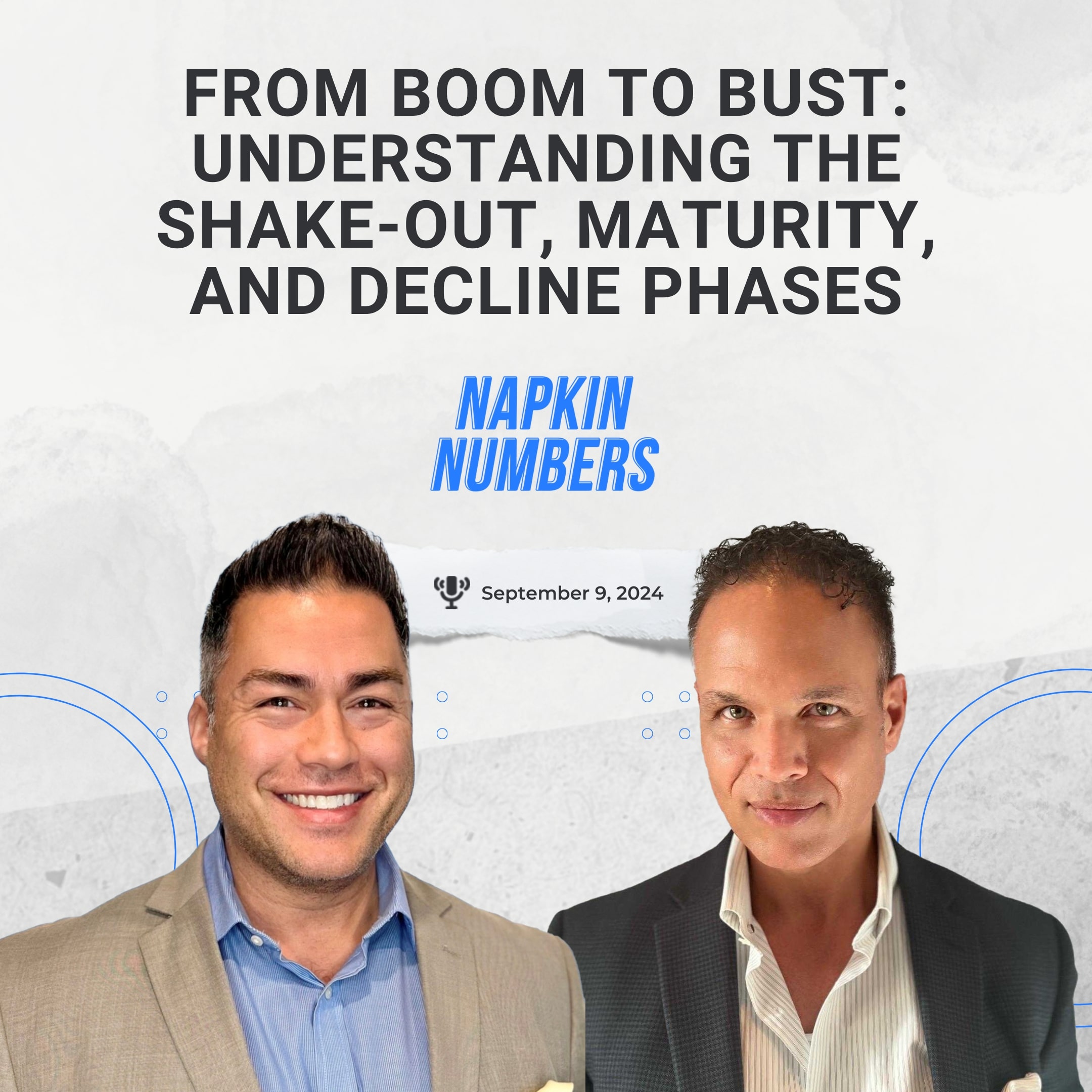
From Boom to Bust: Understanding the Shake-out, Maturity and Decline Phases
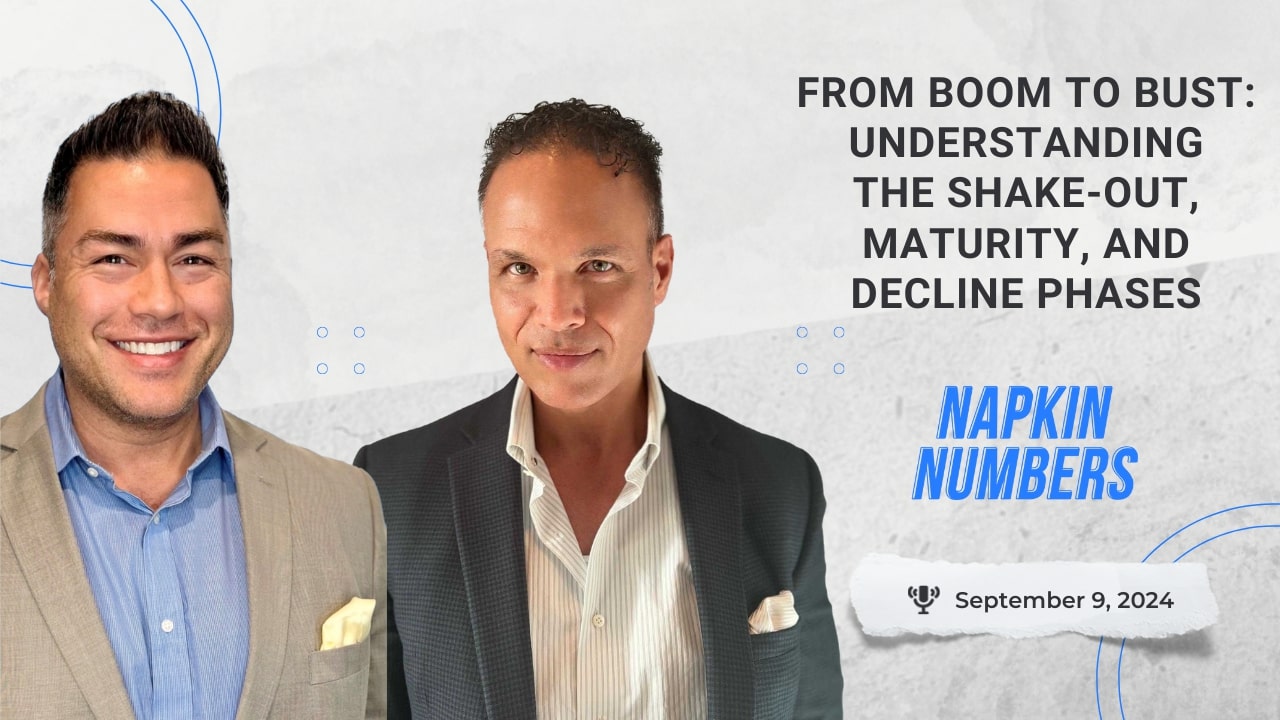
In this episode of the Napkin Numbers podcast, join Scott Lundt and Rahsaan Freeman as they guide you through the crucial last stages of the business lifecycle. From navigating the shake-out phase to thriving in business maturity, they offer actionable strategies for recognizing decline, optimizing funding, and planning your exit – because knowing when and how to step away can be just as critical as knowing how to grow.
Tune in for expert insights to keep your business on the path to long-term success.
Napkin Numbers Talking Points
[0:00] Introduction to Business Life Cycles and Corporate Funding Series Part Three.
- Rahsaan Freeman introduces the third part of the series, focusing on the shake-out, maturity, and decline phases of the business and corporate funding lifecycle.
[0:22] Understanding the Shake-out Phase
- Rahsaan discusses the shake-out phase, which occurs after the growth phase.
- This phase leads to slower sales increase and decreasing profits due to market saturation and increased competition.
[2:42] Navigating the Maturity Phase
- Scott discusses the Maturity phase, which marks stable sales, thinner profit margins, increased competition, and the need for innovation and brand image reinforcement.
- It often accompanies a low business risk and increased debt funding availability.
[5:23] Recognizing the Decline Phase
- The decline phase is characterized by decreasing sales, profits, and cash flow, resulting from failure to keep up with competition and market changes.
- It’s crucial for business owners to have a plan for either reinvestment or exit.
[7:10] Planning for Transition and Retirement
- Business owners entering the decline phase should start setting goals for an exit timeline, assembling a transition team, and keeping up on financial and operational records.
- It’s essential to ensure you have a plan B in case plan A doesn’t work.
The later stages of the business lifecycle—shake-out, maturity, and decline—are crucial in shaping the future and legacy of your business. Applying strategies to navigate these key phases, such as maintaining brand strength, adapting to competition, and preparing for the future, will position your business for lasting success.
Freeman Lundt is here to help you plan your business’s growth and exit from your business on your terms. The #1 question of CEOs looking to grow or sell their business is always, what is my business worth? Don’t worry, we have a free, confidential, industry-leading tool for that! Please use our complimentary business evaluation calculator to determine your business’s worth.
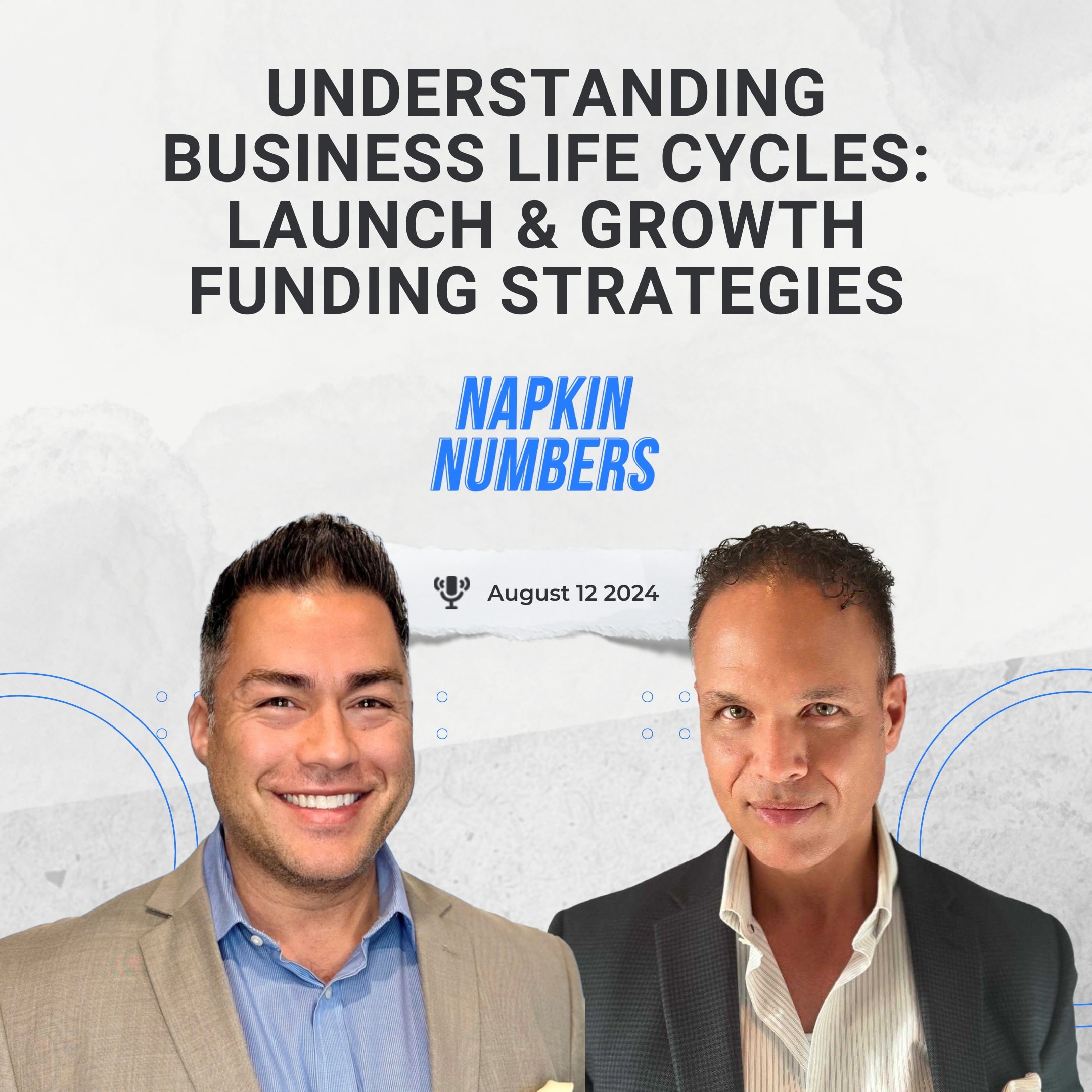
Understanding Business Life Cycles: Launch and Growth Funding Strategies
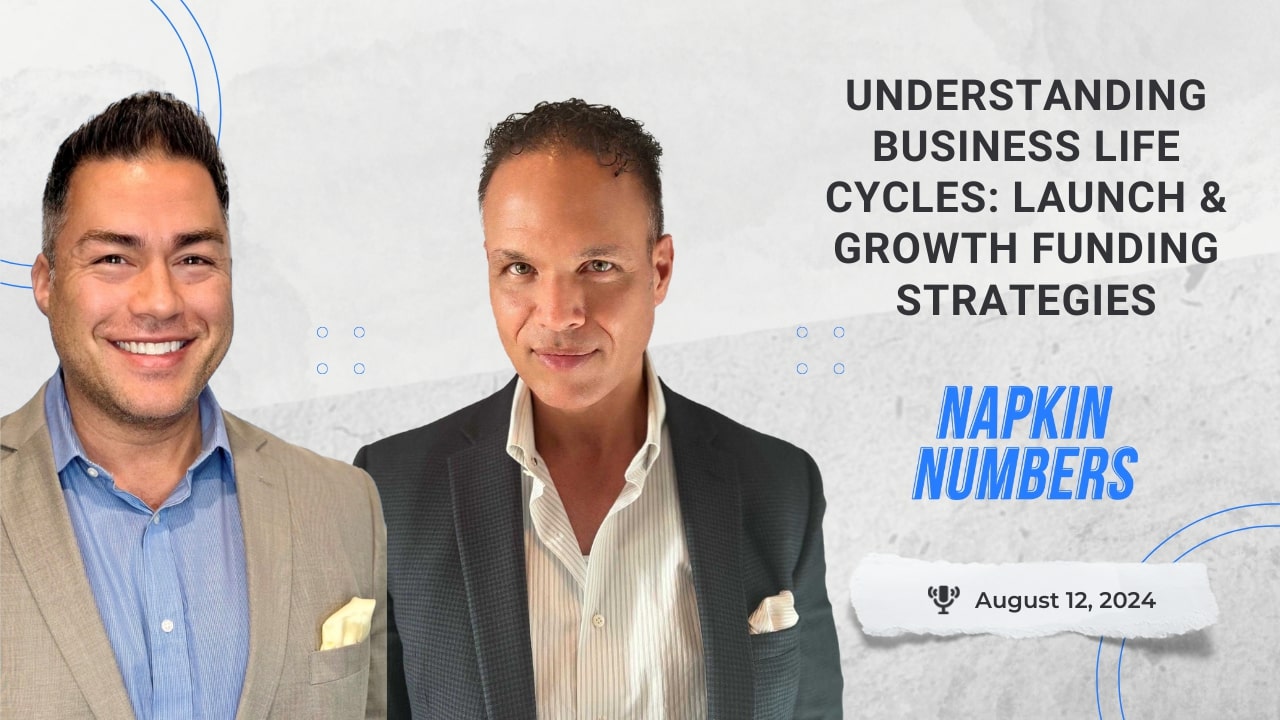
In this episode of the Napkin Numbers podcast, Scott Lundt delves into the intricacies of startup funding strategies and the pivotal role of business banking products. He offers insights on managing cash flow and creating financial growth plans. Scott discusses overcoming negative cash flow during the launch phase and seizing growth opportunities, emphasizing the importance of strong relationships with bankers.
This episode is valuable for business owners navigating early growth stages, providing practical advice and actionable insights for strategic financial management.
Napkin Numbers Talking Points
[0:00] Introduction to Business Life Cycles and Corporate Funding Series Part Two
- Scott Lundt introduces the second part of the series, focusing on the launch and growth phases of the business and corporate funding lifecycle.
[1:00] The Launch Phase and Banking Products
- Scott discusses the different phases of the business life cycle, including launch, growth, maturity, and decline, as well as the implications for sales, competition, and decision-making.
- Scott highlights the banking products appropriate for this stage, including business checking accounts, savings accounts, credit cards, and business insurance.
[4:29] The Growth Phase and Financial Success
- Scott discusses the signs of entering the growth phase, such as increased sales, profits, and positive cash flow.
- He emphasizes the decreased business risk and the need for additional capital to expand and diversify sales.
- He outlines the banking products appropriate for this stage, including business loans, lines of credit, merchant services, treasury management services, and commercial credit cards.
[7:33] Conclusion and Advisory Team
- Lundt concludes the episode by emphasizing the importance of seeking guidance from advisors, bankers, and SBA counselors for continued success. Stay tuned for part 3 in the series to cover the last stages of the business lifecycle!
Mastering funding strategies and leveraging business banking products sets a strong foundation for your startup’s success. Scott’s insights on managing cash flow and planning for growth give your business a valuable roadmap for navigating the complexities of early business stages. Building strong relationships with bankers and seeking their guidance can make a significant difference during these formative years, ensuring your business survives and thrives.
Freeman Lundt is here to help you plan your business’s growth and your exit from your business on your terms. The #1 question of CEOs looking to grow or sell their business is always, what is my business even worth? Don’t worry, we have a free, confidential, industry-leading tool for that! To determine your business’s worth, please use our complimentary business evaluation calculator.
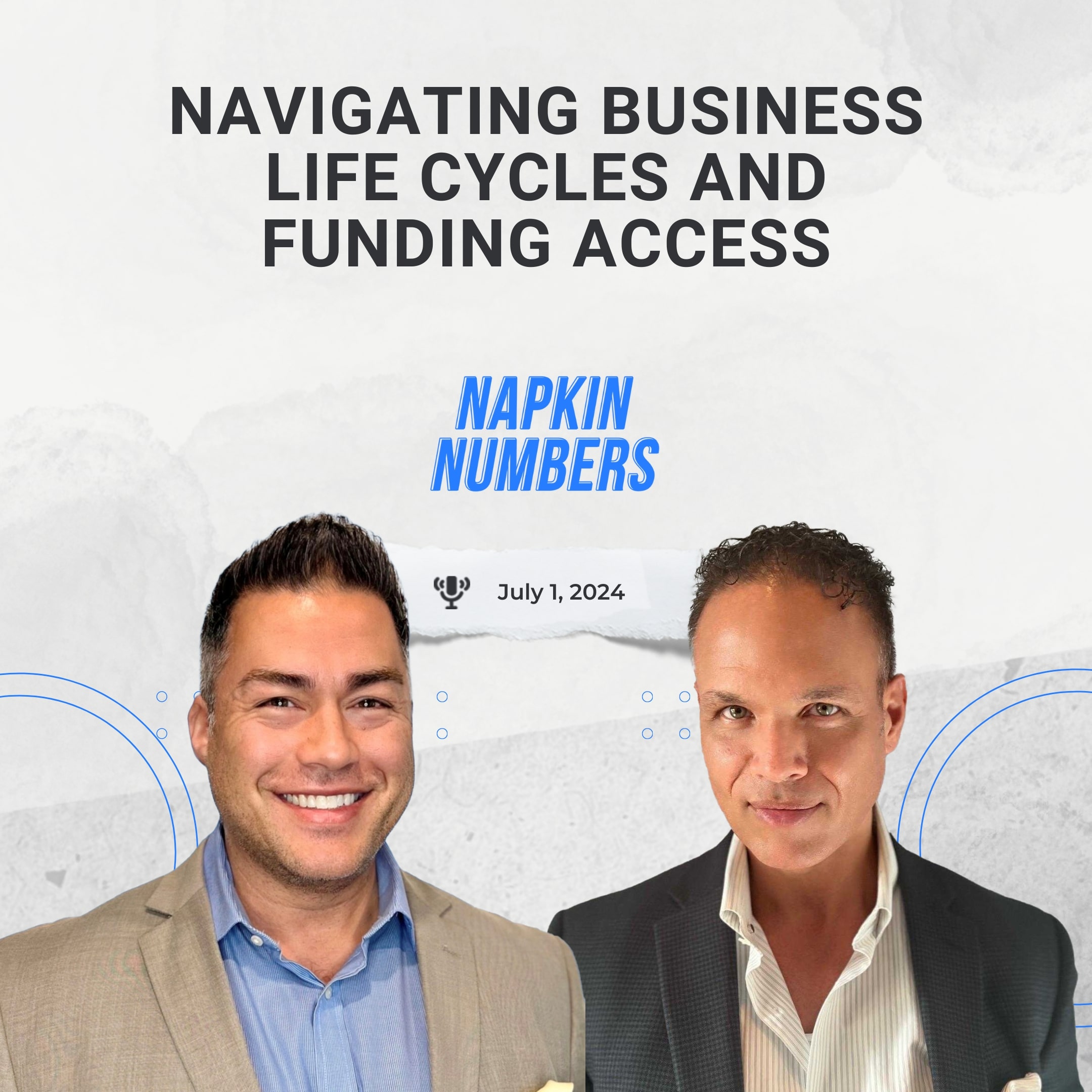
Navigating Business Life Cycles and Funding Access
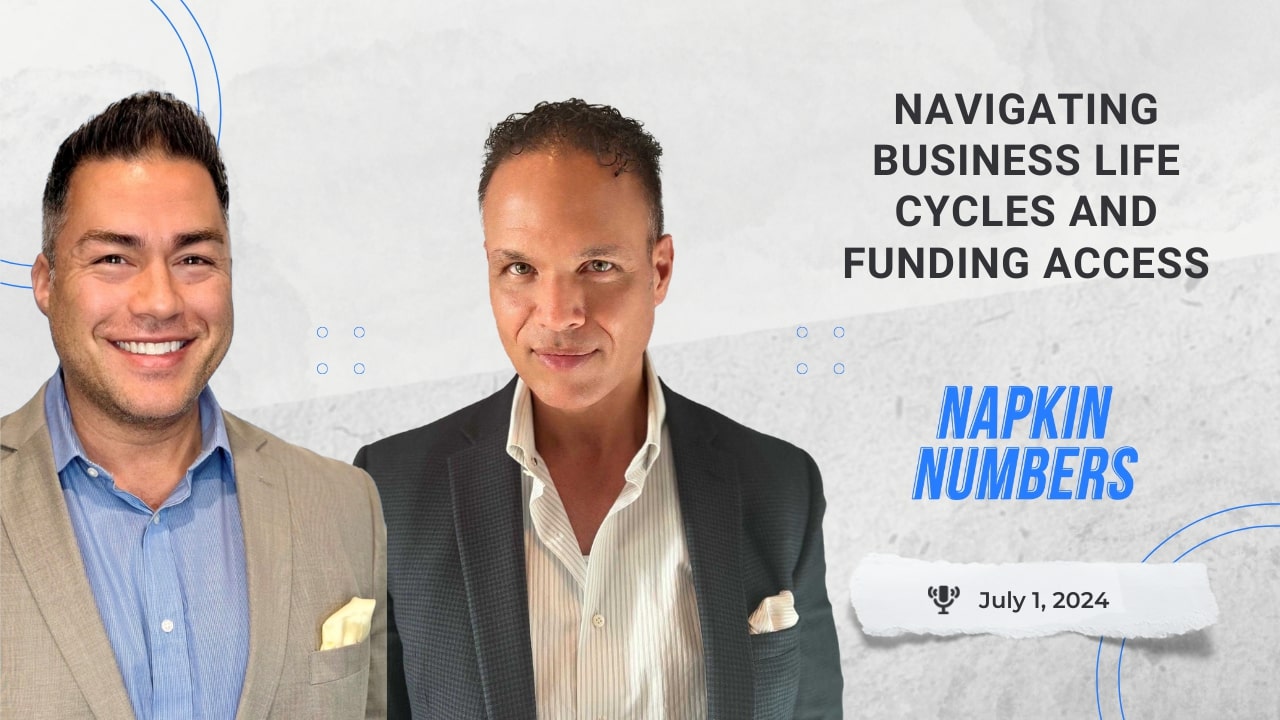
Navigating each business life cycle can be challenging, and it’s important to understand where your business falls. From the early stages of growth, through maturity and even exiting your business, Scott and Rahsaan have it covered with this Napkin Numbers episode.
They share the challenges and choices your business may face at each stage, highlight varying levels of risk, the challenges of securing funding at each of these pivotal stages, as well as the important resources available to meet these challenges.
Napkin Numbers Talking Points
[0:00] Introduction to Business Life Cycles and Corporate Funding
- Scott and Rahsaan introduce the topic of business life cycles and corporate funding, emphasizing the importance of understanding the progression from starting a business to its growth and decline.
[0:47] Understanding the Business Life Cycle
- Scott discusses the different phases of the business life cycle, including launch, growth, maturity, and decline, and the implications for sales, competition, and decision-making.
[2:55] Capital Access and Corporate Funding Lifecycle
- The conversation delves into the alignment of capital access with the business life cycle, highlighting the varying levels of risk and the challenges of securing funding at different stages.
[4:34] SBA Resources and Support
- Rahsaan mentions the wealth of resources available through the Small Business Administration (SBA) for business owners at different stages of the life cycle, including business plans, templates, and local counseling services.
[5:35] Conclusion and Next Steps
- The episode concludes with a preview of the next parts in the series, encouraging viewers to tune in for more in-depth explorations of the launch and growth stages, and a reminder to like and subscribe to the podcast.
Understanding the intricacies of business life cycles and corporate funding can not be overstated. It is important to understand each specific phase—from launch to decline—and how it affects sales, competition, and decision-making. Aligning capital access with these life cycle stages and using the invaluable resources offered by the SBA will go a long way in keeping you one step ahead in the world of business.
If you want to sell a business, please use our complimentary business evaluation calculator to determine its value.

Protecting Your Business Assets: Lessons To Increase Your Business’s Value

Join Rahsaan Freeman and Scott Lundt as they dive into some risky scenarios that seriously affected their clients’ business’s value when it came time to sell. Rahsaan and Scott share real case studies where over-reliance on a single major customer tanked a manufacturer’s revenue when that customer went under and it took them years to recover.
They discuss the common temptation of using your business like a personal piggy bank and why that will slash your business’s valuation. Also, failing to protect intellectual property and document key processes – both easily avoidable mistakes that ended up costing business owners 7-figures on their exit! These stories are to help you make proactive decisions now that set you up for maximum value later.
If concentration risk, personal expenses, or lack of IP protection feel familiar, this episode will inspire some valuable changes! Even if you’re not looking to sell in the near future, these case studies demonstrate why having a trusted expert NOW will set you up for success when retirement is on the horizon.
Napkin Numbers Talking Points
[0:37] Importance of Diversifying Client Base
- Scott discusses the importance of not depending on a single customer (or single type of customer) and the negative impact it can have on a business’s value.
- He shares a case study of a company that suffered a huge revenue dip due to customer concentration and the positive outcome after diversifying its client base.
[3:04] Using Business as a Personal Piggy Bank
- Rahsaan highlights the risks of using the business for personal expenses and how it can negatively impact the business’s value.
- He emphasizes the importance of running the business as a business and not using it for personal funding.
[6:31] Impact of Unprotected Intellectual Property
- Scott shares a case study where a company’s unprotected intellectual property led to a significant decrease in their business’s value.
- He emphasizes the importance of protecting the assets of the business to maintain its value during a sale.
[9:09] Importance of Process Documentation
- Scott discusses the risks of neglecting process documentation and improvements in a company.
- He shares a case study in which a buyer acquired a company at a reduced price due to the lack of documented processes, emphasizing the value of having clear onboarding and manufacturing manuals for successful business transfers and future sale preparations.
To prepare to exit your business, consider the missteps others have made and set yourself up for long-term success and a better business valuation by following these tips: diversify your client or customer base, protect your intellectual property, document your processes and run your business like a business – not a personal piggy bank.
If you want to sell a business, please use our complimentary business evaluation calculator to determine its value.

